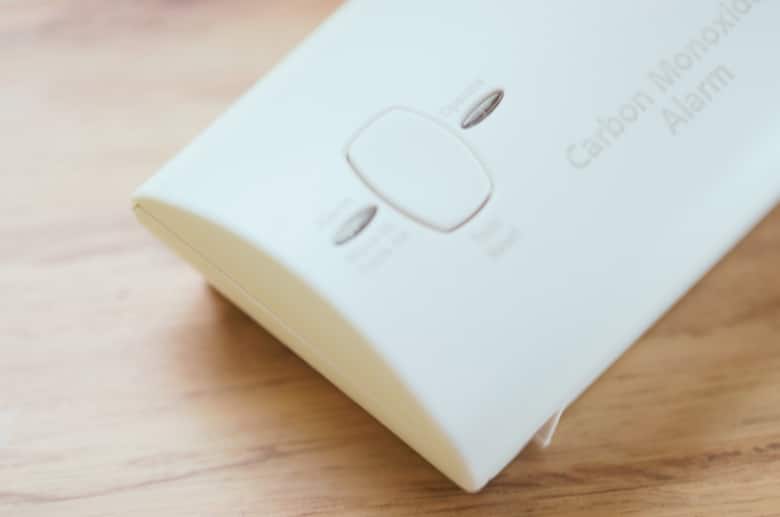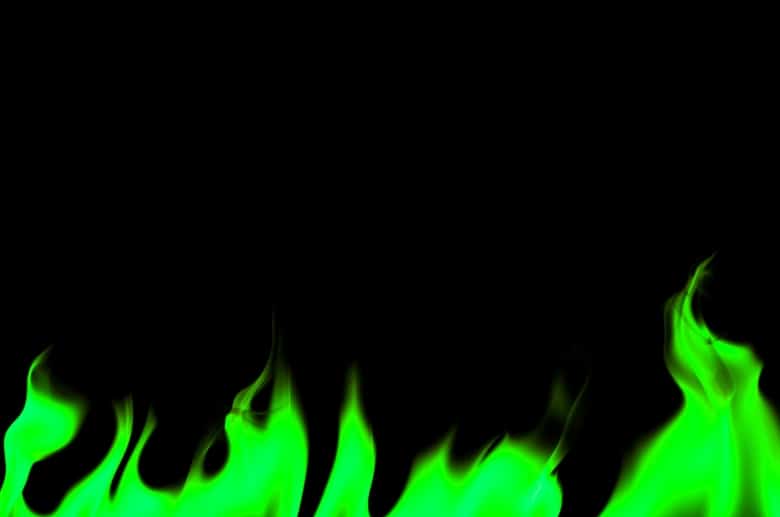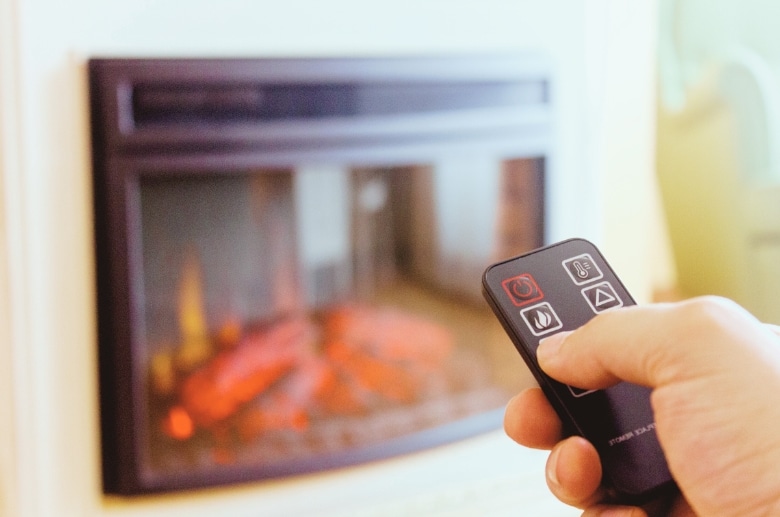You have a cozy gas fireplace, but lately, it’s not working as well as it used to. Don’t worry, we’ve all been there. Gas fireplace repair might not be the most thrilling topic, but it’s crucial for keeping your home safe and maintaining that warm, inviting ambiance during the colder months.
In this guide, we will cover everything from common gas fireplace problems you might encounter to tips and troubleshooting techniques to help you get your fireplace back in tip-top shape.
But before we get into the details, let’s discuss why gas fireplace maintenance matters.
Importance of Regular Gas Fireplace Maintenance

First and foremost, your gas fireplace isn’t just there for show—it serves a vital function in keeping your home warm. Neglecting its maintenance can reduce efficiency, introduce potential safety hazards, and lead to costly repairs.
Beyond the potential cost savings, several compelling reasons exist to prioritize routine checks and gas fireplace maintenance. They include the following:
Prevention of Major Issues and Extending Fireplace Lifespan
During routine service, technicians can identify and address minor problems like gas leaks, worn-out parts, or faulty components before they escalate into costly, hazardous situations. A well-maintained gas fireplace is safer and likely to last 10-15 years.
Improved Energy Efficiency
Gas fireplaces are renowned for their energy efficiency, but this can decline over time without proper maintenance. Dust and debris accumulating in the burner and venting system hinder constant airflow, affecting combustion.
Hence, regular cleaning and servicing ensure your fireplace operates at peak efficiency, reducing energy consumption and saving you money on heating bills.
——
Do You Need to Hire Chimney & Fireplace Expert?
Get free quotes from qualified experts near you. No commitment required!
——
Consistent Performance and Comfort
When you invest in a gas fireplace, you expect consistent and reliable performance. Regular maintenance helps maintain the quality of the flames, ensuring they burn evenly and brightly. This enhances the aesthetics and contributes to the comfort of your home.
Reduced Carbon Monoxide Risk

A malfunctioning gas fireplace can put you at risk of carbon monoxide, which can be life-threatening. Clogged burners, blocked vents, or inadequate oxygen supply can cause incomplete combustion, producing carbon monoxide.
During gas fireplace service, technicians thoroughly inspect the system. They clean and remove accumulated debris or soot, ensuring unobstructed airflow and combustion.
Additionally, professionals check the gas-to-air ratio and ensure clean and efficient gas is burning, minimizing carbon monoxide production.
Compliance with the Manufacturer’s Warranty
Most gas fireplaces come with manufacturer warranties that require regular maintenance to remain valid. Neglecting routine checks and servicing can void these warranties, leaving you responsible for costly repairs or replacements in case of a malfunction.
Common Gas Fireplace Repair Issues
Now that we’ve established the importance of gas fireplace maintenance let’s look at the most common issues that you may encounter and the steps to diagnosing them:
1. No Ignition or Trouble Starting
The absence of ignition can be attributed to various factors. However, a depleted gas supply is a common issue. Gas fireplaces rely on a steady supply of natural gas or propane to create the flames.
If that’s not the case, a faulty ignition switch, a clogged burner, or problems with the pilot light can cause issues with igniting or starting your gas fireplace.
To pinpoint the problem when your gas fireplace refuses to ignite or start, follow the following steps:
- Check the gas supply
- Inspect the ignition switch
- Clean burner and pilot orifices
2. Weak or Discolored Flames

Dirty burner ports are commonly attributed to weak or discolored flames. Over time, these ports accumulate dust, debris, or soot, obstructing the smooth flow of gas and air, resulting in less robust flames.
An improper air-to-gas ratio can also impact the flame quality. An imbalanced ratio (too much air or gas) will cause the flames to turn orange and yellow. The exact gas-to-air ratio in a gas fireplace can vary depending on the design and type of gas used (natural gas or propane).
However, as a general guideline, the ideal air-to-gas ratio for complete combustion is around 10:1, meaning ten parts of air to one part of gas by volume.
Gas pressure problems are another reason you may encounter weak or discolored flames. Inadequate gas pressure will lead to weak flames, while excessive pressure may cause flames to take on a yellow hue.
To diagnose and resolve these issues, follow the tips below:
- Inspect and clean the burner ports to ensure unobstructed gas and airflow.
- Adjust the air shutter on the burner to achieve the correct air-to-gas ratio for optimal flame appearance. (Seek professional assistance if you don’t know how to handle this step.)
- Verify and adjust gas pressure within the recommended range specified in your fireplace’s manual.
- Examine the venting system for blockages, damage, or restrictions to ensure proper airflow and combustion.
3. Unusual Odors or Sounds
Natural gas and propane often have a distinctive odor added to them to help people detect the fumes before they become a serious safety hazard. The odorant used is mercaptan, which has a strong and unpleasant fireplace smell often described as similar to rotten eggs, skunk spray, or sulfur.
If you suspect a gas leak, take action to ensure your safety. Turn off the fireplace, shut off the gas supply, and evacuate the area. Contact a professional gas company immediately to locate and rectify the leak.
Unusual sounds, such as rattling or hissing, often stem from dust and debris buildup in the fireplace, burner, or venting system. These foreign materials disrupt airflow and combustion, causing odd noises.
4. Pilot Light Problems
A pilot light that won’t stay lit will be due to a clogged orifice from the accumulation of dust and debris over time. Thermocouple malfunctions and a faulty/worn-out pilot assembly are reasons you may experience pilot light problems.
To efficiently diagnose pilot light problems, you’ll require an expert. The professional will begin by checking the orifice for blockages. Should this not resolve the issue, the contractor will proceed to inspect the thermocouple’s alignment and condition.
If the problem persists despite these measures, the last option will be to replace the pilot assembly.
——
Do You Need to Hire Chimney & Fireplace Expert?
Get free quotes from qualified experts near you. No commitment required!
——
5. Worn-Out Parts
Over time, components like the thermocouple or thermopile can degrade due to extended use, high temperatures, and general wear and tear. Gaskets and seals may also deteriorate, leading to gas leaks or disrupting proper combustion.
Electrical wiring connections are not immune to wear either—corrosion or loose connections can affect the electrical systems responsible for controlling the gas fireplace system.
Inspect the thermocouple and thermopile for visible wear or damage to diagnose this issue. Check the gaskets and seals for degradation, ensuring they maintain proper seals to prevent gas leaks. Also, evaluate the condition of electrical wiring connections to confirm they are secure and corrosion-free.
6. Blockages
Blockages can arise within the gas fireplace and its venting system. Dust, debris, or soot accumulation can clog burner ports or pilot orifices, hindering proper gas and airflow.
External elements, like bird nests or leaves, may also obstruct the venting system, preventing the expulsion of combustion byproducts and proper ventilation.
You must begin with a systematic inspection to pinpoint and resolve this issue. Examine the burner ports and pilot orifices for visible signs of clogs or obstructions. If blockages are present, clean them thoroughly to restore proper gas and airflow.
Also, check the venting system for signs of obstructions or damage. Ensure it’s free from nests and other debris for optimum functionality.
7. Malfunctioning Thermostat or Remote Control

Thermostat or remote control malfunctions may occur due to dead batteries, signal interference, or faulty wiring. Check and replace the thermostat or remote control batteries to ensure adequate power supply.
Also, inspect the wiring connections for loose or damaged wires and ensure no signal interferences limit their functionality.
DIY vs. Professional Repair
Although DIY efforts can be admirable, there are situations where calling a professional is the wiser choice. Below, we examine when to undertake DIY projects and when to seek assistance from experts.
Complexity of Certain Repairs
While simple maintenance tasks like cleaning burners or replacing batteries in remote controls are well-suited for DIY enthusiasts, more complex repairs may exceed your capabilities.
If the repair involves intricate components, gas line adjustments, or complex electrical work, it’s best to leave it to professionals with the expertise and experience to handle such issues.
Risks Involved
DIY repairs that involve gas connections or venting systems can pose significant safety risks if not executed correctly. Gas leaks, inadequate ventilation, or improper combustion can result from DIY mistakes, potentially leading to fires, explosions, or carbon monoxide exposure.
For high-risk jobs, we recommend you call a professional to ensure the repair is conducted safely and according to industry standards.
Benefits of Hiring Professionals for Specific Issues
Some benefits you can enjoy from hiring professional gas fireplace repair services include:
Expertise and Knowledge
Hiring professionals for gas fireplace repair ensures access to experts with the necessary knowledge and training. They can accurately diagnose issues and implement the correct solutions, reducing the risk of further damage or safety hazards.
Safety Assurance
Professionals are well-versed in safety protocols. They can repair and maintain your fireplace in compliance with safety standards, minimizing the risk of gas leaks or fires.
Time Efficiency
Professionals can save time by quickly identifying and fixing issues. Attempting DIY repairs may lead to trial and error, which can be time-consuming and frustrating.
Long-Term Cost Savings
While professional services may come with a price tag, they can ultimately save you money in the long run. Proper repairs and maintenance prevent small issues from becoming major problems that require expensive fixes or even replacements.
Warranty Preservation
If your gas fireplace is still under warranty, attempting DIY repairs or hiring non-professionals may void the warranty. Hiring pro contractors ensures that any repairs or maintenance are carried out in a manner that preserves your warranty coverage, offering added peace of mind.
——
Do You Need to Hire Chimney & Fireplace Expert?
Get free quotes from qualified experts near you. No commitment required!
——
Gas Fireplace Repair Cost
You can expect to pay between $80 and $100 for small gas fireplace repairs, but the cost can go up to $2,000 for complex repair jobs. This cost may vary due to several factors, such as:
1. Parts
Basic components like thermocouples or pilot light assemblies are cheaper than complex parts like gas valves or control boards. This makes some repair jobs more costly than others.
2. Labor
Labor costs vary from $50 to $200 per hour, depending on the repair’s complexity and the technician’s hourly rate. Some repairs may require more time and expertise, increasing the overall cost.
3. Region
Repair costs also vary by location due to differences in labor rates, availability of technicians, and the cost of living. Urban areas typically have higher labor rates than rural ones.
4. Age and Condition
Older gas fireplaces may require more extensive repairs or part replacement due to wear and tear. This makes repairing older fireplaces more costly than new ones.
Taking that into consideration, let’s examine the typical cost ranges associated with common gas fireplace repair services:
| Component | Average Repair Cost |
| Thermocouple Replacement | $150 to $380 |
| Thermopile Replacement | $100 to $300 |
| Pilot Light Repair | $100 to $350 |
| Gas Valve Replacement | $150 to $400 |
| Control Board Replacement | $200 to $600 |
| Ignition System Repair | $200 to $500 |
Should You Repair or Replace Gas Fireplace Components?
Repairing components comes with a lower immediate cost. It can be cost-effective for minor issues such as thermocouple replacement or pilot light repair. Moreover, repairs are typically faster to complete, allowing you to enjoy the warmth and ambiance of your fireplace sooner.
Repairing also preserves the original appearance of your fireplace, which can be essential if aesthetics are a priority. However, repairing may not significantly extend the lifespan of your gas fireplace, and it may offer limited improvements in energy efficiency.
There’s also the possibility of future breakdowns, especially if your fireplace is older, which could lead to additional repair costs over time.
What about Replacing?
Replacing components, on the other hand, can provide long-term benefits. New parts, such as gas valves or control boards, can improve your fireplace’s efficiency and performance.
This can result in lower energy bills and a more comfortable living space, making it a wise choice for those seeking enhanced functionality. Additionally, many replacement components come with warranties, offering peace of mind and protection against future issues.
However, it’s important to note that replacing components often involves a higher upfront cost, and you may need professional installation, which can add to the overall expense. Moreover, it can alter the look of your fireplace if you upgrade to a more modern unit.
Preventive Maintenance Tips for Gas Fireplaces
Scheduling regular cleaning and inspection services for your gas fireplace can positively impact its performance and lifespan. In addition to cleaning inspections, here are seven preventive maintenance tips to help keep your gas fireplace running smoothly:
- Regularly clean the glass in front of your fireplace with a suitable glass cleaner.
- Inspect and clean the burners to remove dust and debris.
- Clear vents and air intakes.
- Regularly test carbon monoxide detectors to ensure functionality.
- Inspect the pilot light regularly.
- Keep the area clear of clutter.
- Schedule an annual professional cleaning.
Conclusion
Maintaining a well-functioning gas fireplace is a critical aspect of home safety. We highly recommend professional assistance for repairs. Experts can easily identify and address potential safety hazards that go unnoticed.
They might also provide you with the correct advice on approaching various situations regarding gas fireplace repair. Schedule your annual inspection to keep your home cozy and secure today!






